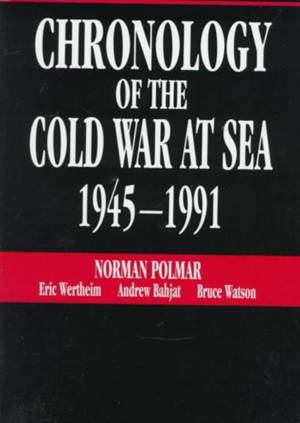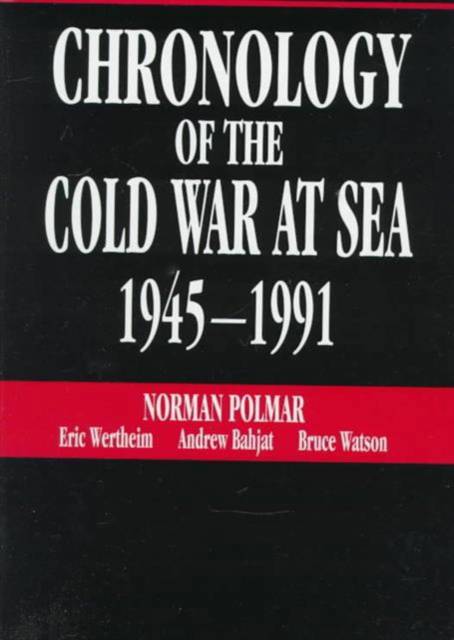
- Retrait gratuit dans votre magasin Club
- 7.000.000 titres dans notre catalogue
- Payer en toute sécurité
- Toujours un magasin près de chez vous
- Retrait gratuit dans votre magasin Club
- 7.000.0000 titres dans notre catalogue
- Payer en toute sécurité
- Toujours un magasin près de chez vous
Chronology of the Cold War at Sea, 1945-1991
Norman C Polmar, Eric M Wertheim, Andrew Bahjat, Bruce Watson
Livre relié | Anglais
50,45 €
+ 100 points
Description
From the very beginning the U.S. Navy played a central role in what turned out to be a forty-five-year confrontation between East and West known as the Cold War. The Navy was a key player in the Cold War because of its ability to project U.S. presence and power to the far corners of the globe. This detailed new reference work provides for the first time a useful chronological outline of Cold War developments and events as they relate to U.S. and Soviet naval forces and their allies. The book covers naval presence and combat operations from Korea, the Suez campaign, and the Vietnam War to the Iran-Iraq conflict, the Falklands War, and the Gulf War. Smaller-scale confrontations also are included. Naval technological and personnel developments are recorded, such as the unveiling of new ship types, advances in missile technology, introduction of new aircraft, and changes in naval leadership. Context is guaranteed by the inclusion of major Cold War events whether related to the sea or not, but the main emphasis is to show how the Cold War evolved in the maritime environment. Readers will find information about the Cuban missile crisis, the massive Soviet naval expansion, the largest peacetime U.S. naval buildup in history during the 1980s, and hundreds of other crucial Cold War events at sea. A glossary defines military acronyms and terms. Appendixes list individuals who held the highest military offices in the USSR and the United States between 1945 and 1991. With new information made available through the opening of Russian archives, this book serves as a walk through history as well as an indispensable reference for all naval history buffs and students of the Cold War.
Spécifications
Parties prenantes
- Auteur(s) :
- Editeur:
Contenu
- Nombre de pages :
- 264
- Langue:
- Anglais
Caractéristiques
- EAN:
- 9781557506856
- Date de parution :
- 05-01-98
- Format:
- Livre relié
- Format numérique:
- Genaaid
- Dimensions :
- 185 mm x 261 mm
- Poids :
- 680 g

Les avis
Nous publions uniquement les avis qui respectent les conditions requises. Consultez nos conditions pour les avis.






